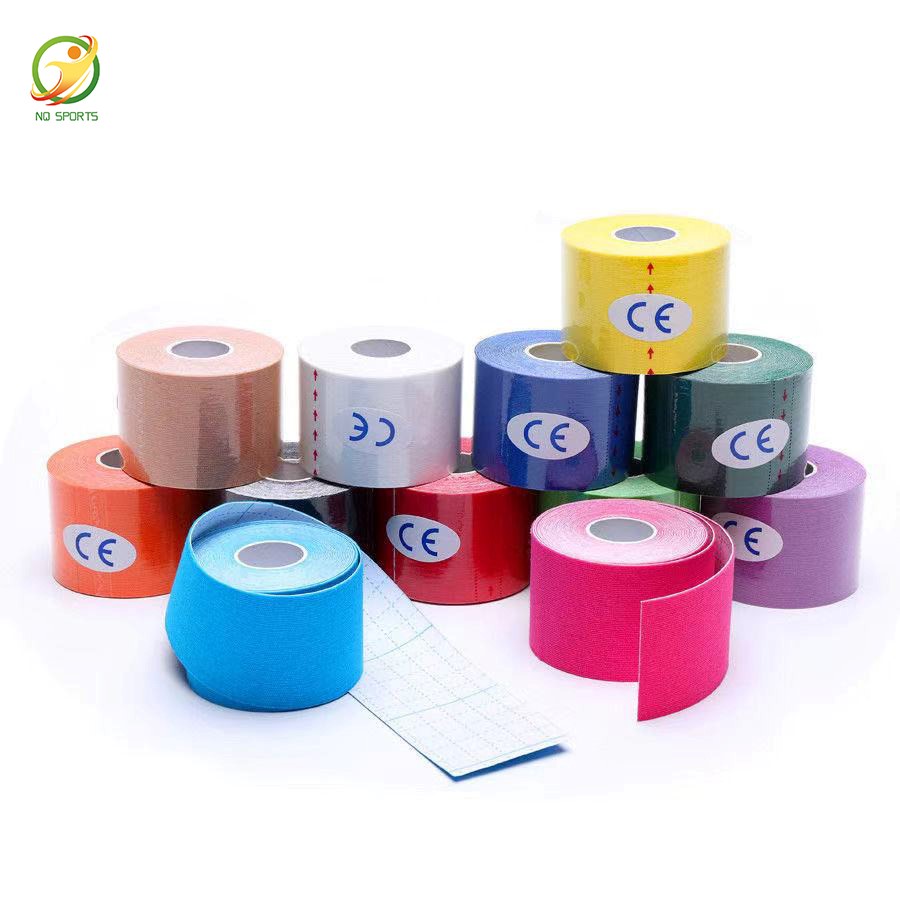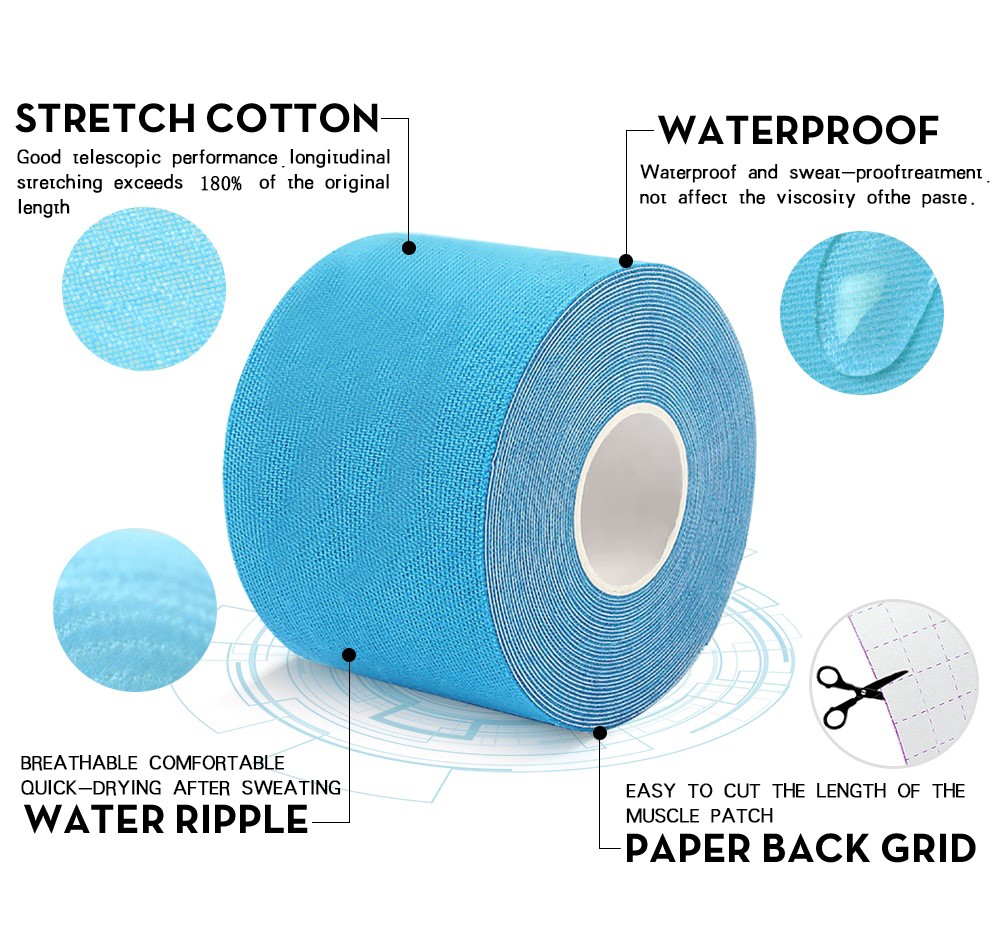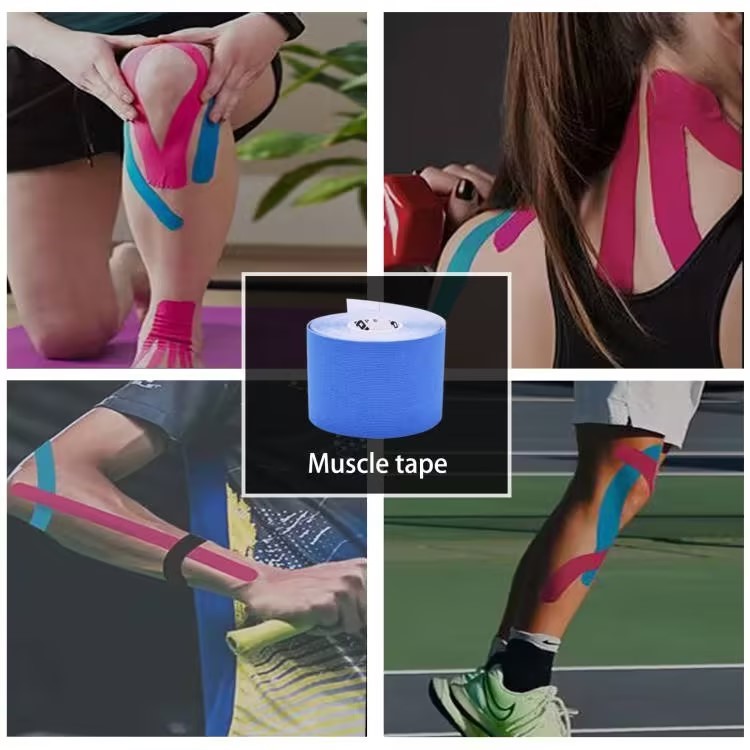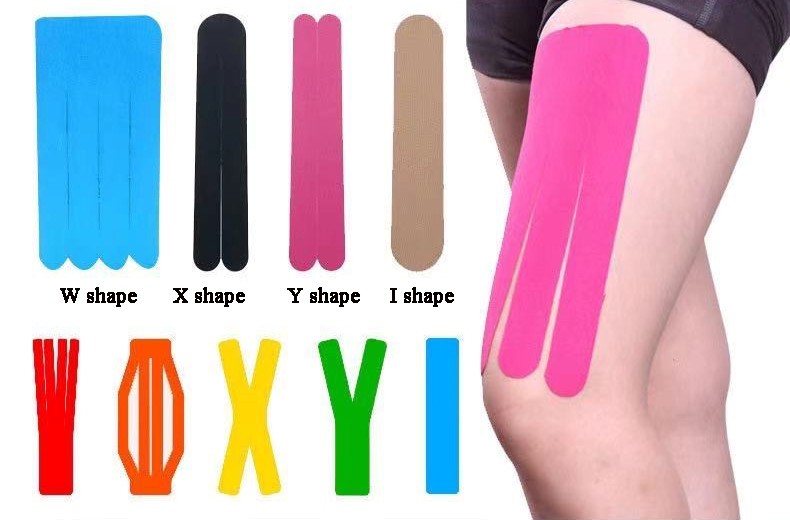Kinesiology tape, also known as elastic therapeutic tape or sports tape, has become increasingly popular in the field of sports medicine and physical therapy. This article aims to explore the materials used in kinesiology tape, its numerous advantages, and how it is commonly used to address various needs.

Materials Used in Kinesiology Tape:
Kinesiology tapes are designed to resemble the elasticity of human skin, providing support and stability while allowing freedom of movement. These tapes are typically made from cotton or synthetic fibers, with an adhesive backing that is usually acrylic-based. Let's explore the materials used in further detail:
1. Cotton: Cotton-based tapes are widely favored due to their natural, breathable, and hypoallergenic qualities. They are gentle on the skin and do not cause irritation or allergies, making them suitable for individuals with sensitive skin. Additionally, cotton-based tapes possess excellent adhesion properties, ensuring they remain securely in place during physical activities.
2. Synthetic Fibers: Kinesiology tapes made from synthetic fibers like nylon, polyester, and spandex have also gained popularity. These materials offer enhanced durability, flexibility, and stretchability, making them particularly suitable for athletes engaged in rigorous activities. Synthetic tapes are known for their excellent moisture-wicking properties, making them an ideal choice for those participating in sports during hot weather conditions.

Adhesive Properties:
The adhesive used in kinesiology tape plays a critical role in its effectiveness. It must have strong adhesion to the skin without causing any discomfort or damage during removal. Acrylic-based adhesives are commonly utilized in kinesiology tapes due to their reliable adhesion even in sweaty or oily conditions. Furthermore, these adhesives are water-resistant, ensuring the tape remains securely in place during activities involving water.
Advantages of Kinesiology Tape:
Kinesiology tape offers numerous advantages, making it a sought-after choice among athletes, physical therapists, and individuals seeking pain relief. Let's explore some of its key benefits:
1. Pain Relief: Kinesiology tape helps alleviate pain by providing structural support to the affected area. It helps reduce pressure on pain receptors, promotes blood circulation, and decreases inflammation. Additionally, the tape stimulates proprioception, which is the body's awareness of its position in space, ultimately reducing pain and facilitating the healing process.

2. Injury Prevention: By providing support to muscles and joints, kinesiology tape can help prevent injuries and improve athletic performance. It offers stability during physical activities, lowering the risk of muscle strains, sprains, and repetitive motion injuries.
3. Enhanced Recovery: Kinesiology tape promotes faster recovery from injuries by increasing blood and lymphatic circulation. It aids in removing metabolic waste products, reduces swelling, and facilitates quicker healing and tissue regeneration.
4. Range of Motion: Unlike traditional athletic tapes, kinesiology tape does not hinder movement. Its elastic nature allows for a full range of motion, making it suitable for athletes and individuals who require mobility during physical activities.
5. Versatility: Kinesiology tape can be applied to various body parts, including muscles, joints, tendons, and ligaments. It can effectively address a range of conditions, such as knee pain, shoulder instability, lower back pain, and tennis elbow.

Usage of Kinesiology Tape:
Kinesiology tape is commonly used in sports medicine and physical therapy for various purposes. The tape is applied directly to the desired area, following specific techniques and guidelines.
1. Correct Application: Proper application is crucial for maximizing the benefits of kinesiology tape. It is essential to clean and dry the area before carefully applying the tape. Techniques like "fan cut," "I cut," or "X cut" may be used to achieve the desired support and stabilization.
2. Duration of Use: Kinesiology tape can be worn for several days, even during showers or other water activities, due to its water-resistant adhesive. However, it is recommended to consult with a healthcare professional to determine the appropriate duration of use based on individual needs.

Conclusion:
Kinesiology tape, with its choice of materials, adhesive properties, and numerous advantages, has become a valuable tool in sports medicine and physical therapy. By understanding the materials used, the benefits it provides, and its correct usage, individuals can make informed decisions about incorporating kinesiology tape into their injury management, athletic performance enhancement, and overall well-being.
Post time: Sep-18-2023
